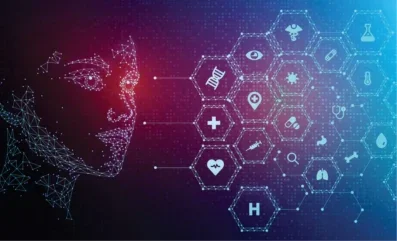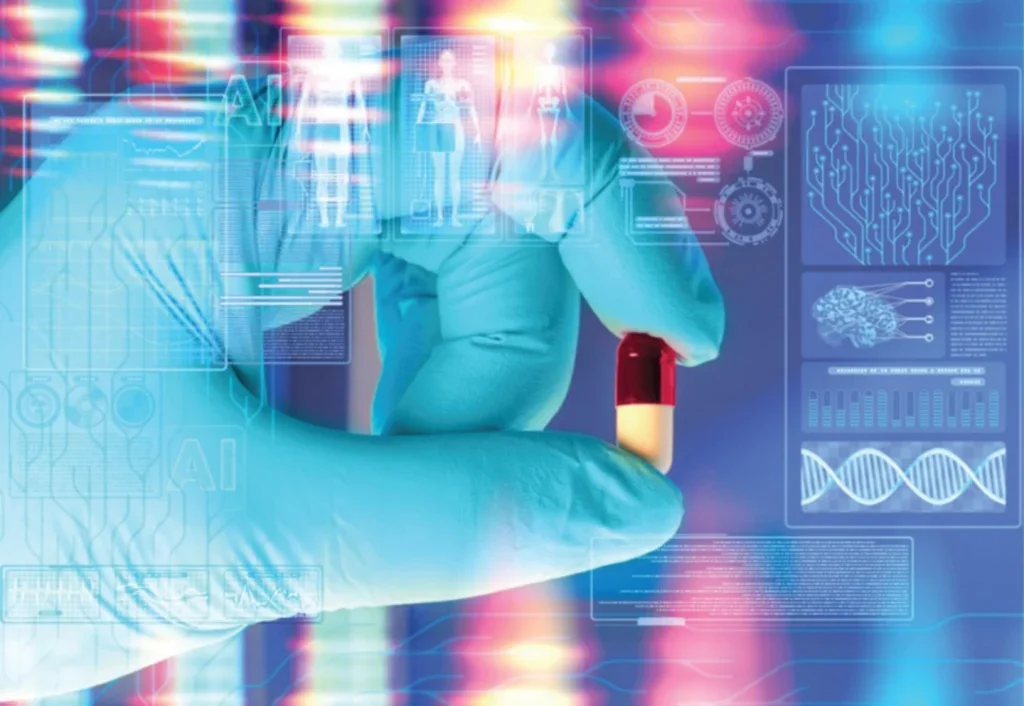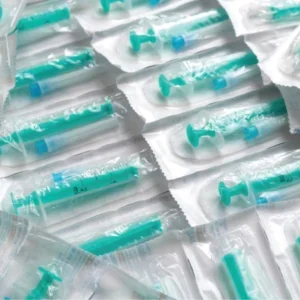
It’s notoriously difficult to gauge how well a drug can reach the brain. For ethical reasons, human trials aren’t typically possible. That leaves scientists with computational simulations, lab experiments or animal studies. Yet none of these options are perfect. For instance, simulations can be limited in what they are able to model and must be validated by experimental data. And while animal studies may be our most faithful recreation of in-human delivery, our current means of measuring permeability aren’t especially precise.
Here, to ascertain how much of the drug has crossed the blood-brain barrier, scientists give the drug to a rat, then take out its brain and weigh it, explains senior lecturer at the School of Medicine, Pharmacy and Biomedical Sciences at Portsmouth University, Christian Jorgensen. “And then they’re making some very difficult mathematical estimation of how much must have got [into the brain]. But that’s it.”
To paint a clearer picture, Jorgensen and his colleagues are working with AI models that can be trained to predict whether a drug will successfully reach the brain. It’s still a work in progress – Jorgensen notes that the field is still very underdeveloped – but this approach might help us gain novel insight into the odds of a drug hitting its target. And they aren’t the only lab that has turned to AI to aid delivery. Researchers around the world are investigating its potential use cases, from designing better delivery systems to optimising excipient choices and more. While much of the hype around AI is focused on early discovery, notes assistant professor of Biomedical Engineering at Duke University, Daniel Reker, there’s plenty to be excited about in terms of improving delivery. “I think it’s a really exciting space.”
Crossing barriers
If a drug can’t pass through the biological membranes it needs to in order to reach its target, it simply won’t work. Yet, estimating a drug’s permeability is a tricky business. In large part, that’s down to the challenges of collecting accurate and reproducible data. In the lab, you would attach a fluorescent probe to the drug molecule so it can be tracked, though this would also change the properties of the molecule, Jorgensen explains. “The permeability you’re now describing is not really the same compound.”

In vivo investigations, like the mouse models described above, can provide mathematical estimations but are complex and expensive to run, he adds. And computational models can only tell us so much. These simulations recreate real-world systems by following defined rules, such as the laws of physics. But essentially, they’re making an educated guess.
Neural networks, which are capable of learning patterns from data, can directly predict whether the drug will cross the membrane. Though at the moment, applications can only provide a simple ‘yes’ or ‘no’ answer. “There have been a few attempts to use a neural network to obtain the actual permeability values,” says Jorgensen. “But we need more data to get this working.”
After all, you can only train your model using data you can access. Currently, one way to do this is to “obtain the experimental distributions for thousands of compounds, and from there, you make inferences to millions of compounds,” Jorgensen explains. Yet at present, this isn’t enough for models to extend beyond yes/no responses, he adds. To boot, there isn’t a standardised way for researchers to incorporate results from different types of experiments within the same data set.
In efforts to plug the data gap, Jorgensen and his colleagues created guidelines for how to compare results from lab investigations with those from AI models, which are published in the Journal of Chemical Information and Modeling. The aim is to create a framework where researchers can compare their findings and pool them into a larger database.
And while AI could certainly be a game changer here, it’s important not to overlook the importance of experimental data. Because ultimately, even if AI models can give us as accurate a prediction as possible, they’re still guessing. Rather, Jorgensen notes, the different types of data – from AI, simulations, in vitro and in vivo – are all important puzzle pieces within the bigger picture of what’s happening.
Better carriers
AI can also be used to design more effective delivery vehicles, such as nanoparticles. In a collaboration between Cardiff University and AstraZeneca, an AI model helped design a bespoke lipid nanoparticle to deliver messenger RNA (mRNA) to cancer cells.
“The new nanoparticles were performing better in both cells and mice compared to the old nanoparticles,” says Arwyn Jones, professor at Cardiff University’s School of Pharmacy and Pharmaceutical Sciences.
First, researchers from both Cardiff and AstraZeneca looked into how cancer cells derived from different tissues reacted to nanoparticles when they touched their surface, how the nanoparticles were taken inside the cell and processed, and how effective the delivery of the nanoparticles’ mRNA cargo was. Then, in a later investigation, they found that when a certain panel of proteins inside the cell were silenced, delivery was more efficient.
Meanwhile, informed by these results, AstraZeneca developed a machine learning model to identify other key endocytosis factors – cellular processes where substances are brought into a cell – that correlated with more effective delivery. This model was then used to suggest the design of a new nanoparticle for delivering mRNA. “From the raw data and the machine learning came the suggestion that we should maybe tailor the nanoparticle to go in a specific pathway,” Jones shares. “So, we changed the formulation to make them a little bit bigger, and it worked.”
While the AI model doesn’t remove the need to test and iterate, you could imagine that the model was setting a new hypothesis, Jones says. “It gave us the insight and the confidence to make a different formulation, and in our case, there was a statistically significant improvement in the performance of these nanoparticles.”
Lipid nanoparticle carriers are widely used in cancer treatment, one of the most significant global health burdens. They’re also used in vaccines, including those for Covid-19. This approach to designing them could potentially shave years off development time. The alternative is trial and error: scientists might create and test hundreds of options before landing on the best one. If AI models can consolidate knowledge from work that is already done, they could make informed suggestions for nanoparticle designs that may have higher odds of success.
Untapped potential
We’ve barely scratched the surface of how we could use AI to improve drug delivery. With a data set that’s robust enough, it could predict all sorts of values and eventually even estimate the chances of successful delivery. At Duke University, Reker’s lab takes a broad approach to machine learning and drug delivery. The team is currently investigating how various models – including random forest models, which make predictions based on decision trees, and language models like ChatGPT – can be used to enhance various aspects of delivery. “We’re optimising whichever model works best for every specific application,” he says.
Like Jones’ lab, the team is working on nanoparticle design, but are using small molecules rather than lipids or polymers as the stabilising excipients since they’re more established within the world of machine learning. Their model currently predicts how stable a nanoparticle will be, but they’re also generating data to build predictive systems that will eventually estimate whether the drug will reach its target.
“We think machine learning can also help by predicting what kind of functional properties excipients might have,” Reker adds. Here, the team’s models predict an excipient’s compatibility within a particular formulation, as well as whether functional excipients could influence delivery. For instance, “Would this excipient inhibit this particular metabolic enzyme? Would it inhibit this particular transport protein?” he explains. Another potential avenue is optimising prodrugs, compounds that are metabolised inside the body and converted into an active drug, Reker shares. “We take a molecule that is already effective and then we auto-complete it by adding a few other chemical moieties, as designed by our generative models, and then let our predictive models decide which ones of these could lead to improved properties.”
Yet one key problem remains: we need more data. Reker notes that data sets around delivery are relatively small compared to other aspects of the drug development pipeline. This is partly due to the limitations of animal models and incompatibility of results from different types of experiments.
Plus, generating new results can take a long time. Jorgensen gives an example: a paper he consistently cites has maybe 50 or 100 data points. To generate each one, a researcher probably had to do a complex experiment. But how much we can get out of AI hinges not only on the depth of our data sets but whether we have enough computing power to process them. Cost also factors in: creating models that consider multiple aspects of the cell environment can be prohibitively expensive, Jorgensen says. And it’s these that would most closely mirror the biological environment. “We can’t make the model too big, and that’s the challenge. We would like to have the whole cell,” he says. “We need more complex models that are closer to reality.”





